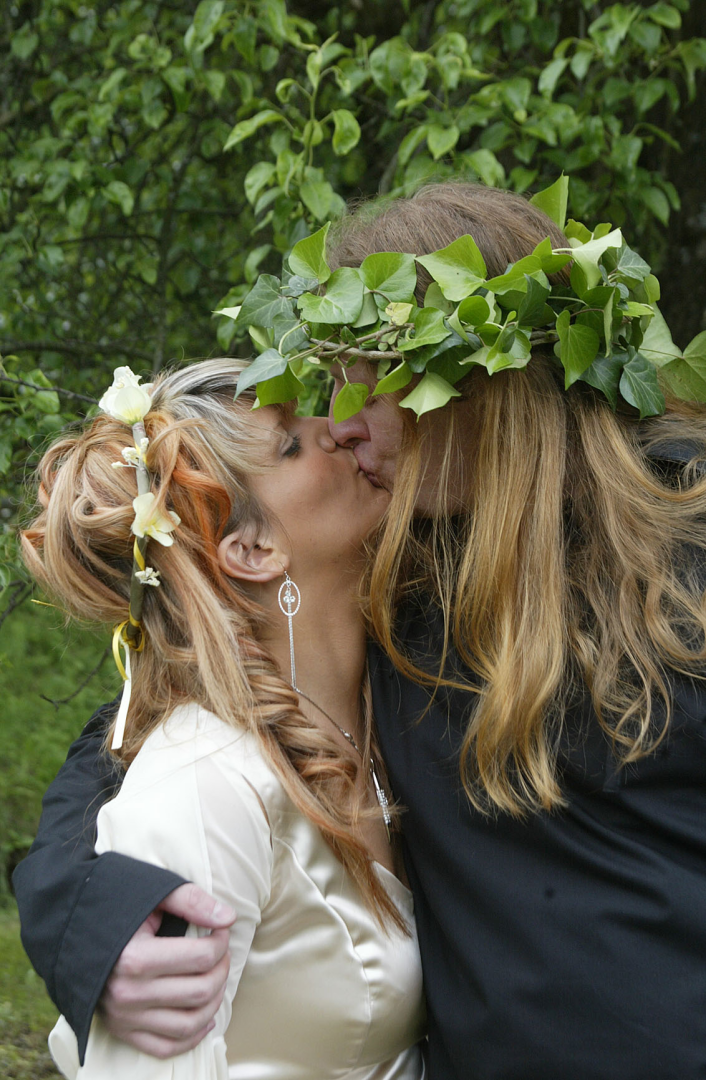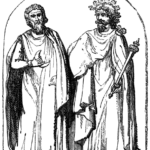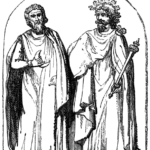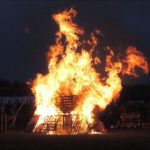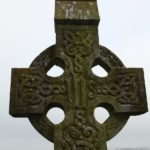When planning a Pagan wedding it can be as similar as planning a traditional wedding or as complicated as recreating a medieval-style ceremony. For the most part, the ceremonies that I have performed have been simplistic in nature and following old religious traditions (which are not necessarily the thought of handfasting ceremony – although some choose to include this in their own ceremony).
Style of the Wedding
The first question I always ask is the style of the wedding. Is the style going to be simplistic or intricate? Most, as I have said, that I have performed have been simplistic. This, in essence, means that the couple would like to write their own vows based upon their personal spiritual beliefs.
There are a few things that I always insist upon. First, a large pillar white candle placed to the right with two single white candles burning and placed on a stand lower than the pillar candle prior to the bridge or groom entering the space. I insist on saging the area regardless of whether it is indoors or outdoors and create a sacred space with a doorway opening where the bride will enter within.
After the bride enters and vows are exchanged (and prior to handfasting if that is to be part of the ceremony) I ask the bride and groom to each take one of the smaller candles and light the pillar one together representing their unity in pure form.
The words spoken vary from Priestess to Priestess and couple to couple.
A typical ceremony for me would be as follows:
Procession
Leading the procession of the bridesmaids through the door into the sacred circle where the groom already waited speaking, “We approach the sacred moment, with hearts and minds and flesh and bone.
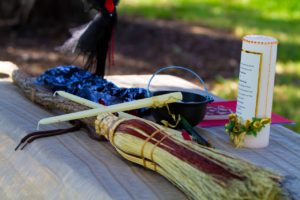 Join us now in ways of old as we gather here before the Ancient Ones on this occasion.” At this point if outside I would start a small kindling fire and if inside a small charcoal sage bowl. “I kindle the sacred fire in wisdom. Love and power, sacred fires burn within us all.” Many times I will add sweet grass to the fire as well here.
Join us now in ways of old as we gather here before the Ancient Ones on this occasion.” At this point if outside I would start a small kindling fire and if inside a small charcoal sage bowl. “I kindle the sacred fire in wisdom. Love and power, sacred fires burn within us all.” Many times I will add sweet grass to the fire as well here.
Cleansing the Bride and Groom
Without reciting all of what is said, a small branch or feather is used to cleanse both the bride and groom with the fire. I would ask if each had a token for the other. Sometimes this is a ring, although I have seen many different tokens used here as well. The Ancient Ones are called upon to witness and bless the water (some prefer wine – I prefer water) and each sharing a sip of the water while words of water’s impact upon life are shared.
Giving Thanks
Thanks are given before both exchange vows and accept the others vows. After the vows are exchanged (and rings if is the case), I ask each to repeat their spiritual vows as well. For example: “In the name of the Ancient One, I pledge thee my ‘cara’ love and to cherish thee through all lifetimes, for even if our paths should later diverge, I will always be thy true friend, to love you, and lend you aid and protection. By the power of the starry mills of heave and beyond the imaginable reaches of time and knowledge, I wish it to be so.”
Handfasting ceremony
At this point, I then perform a handfasting ceremony if that is also the wish. Ending with something to the effect of “In the eyes of the folk, in the light of the spirits who are witness to this rite, and by the powers vested in me by the Ancient Ones and the State of __________ I now proclaim you as joined as one. The two are one, the work of joy is done. Yet it has only begun. You may kiss your bride.
This is truly only the briefest of sketches of a wedding planner. A Pagan ceremony can be steeped in as much tradition and lore as any may wish. It can be a recreation complete with costumes of the Renaissance or as simple as a white cotton shift such as a humble joining. It truly is up to those who wish to be joined as one.
https://www.youtube.com/watch?v=ZmrBFR_byQ4

